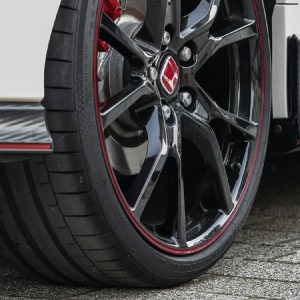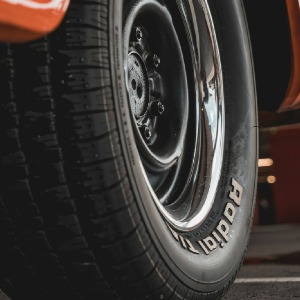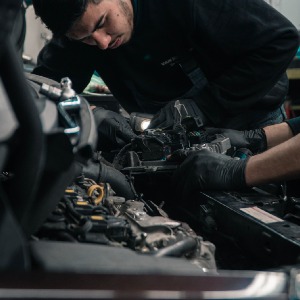Your car’s tire integrity is crucial for a safe and smooth ride. Imagine you’re on the road, and suddenly you feel that subtle but unsettling wobble – a micro puncture in your tubeless tire. Fear not! In this guide, we’ll delve into the innovative solution of repairing these tiny punctures using aerosol. Bid farewell to stress and inconvenience as we explore the step-by-step process of DIY tubeless tire repair.
Understanding Micro Punctures
Micro punctures are the sneaky culprits that can deflate your tire slowly, often going unnoticed until it’s too late. Unlike larger punctures, micro punctures are harder to detect and can compromise your tire’s performance over time. Aerosol tire repair proves to be an efficient solution, providing a quick and reliable fix.
The Aerosol Advantage
Aerosol tire repair kits have gained popularity for their user-friendly approach to fixing tubeless tire issues. These kits typically consist of a sealant in an aerosol can, making them convenient for on-the-go repairs. The sealant not only plugs the puncture but also helps to maintain tire pressure, ensuring a temporary fix until you can get to a professional mechanic.
Step-by-Step Guide
1. Assess the Damage
Begin by identifying the punctured area. Clean the tire surface to remove any dirt or debris that could interfere with the repair process. Once clean, inspect the tire for the micro puncture carefully.
2. Position the Valve at the Top
To ensure effective application of the aerosol sealant, position the tire’s valve at the top. This allows the sealant to flow easily into the puncture and coat the inner surface of the tire, maximizing its sealing capabilities.
3. Attach the Aerosol Can
Most aerosol tire repair kits come with a simple nozzle that attaches to the valve. Firmly connect the aerosol can to the valve, ensuring a tight seal to prevent any leakage.
4. Inject the Sealant
Depress the nozzle to inject the sealant into the tire. Hold the can upright, and follow the recommended dosage instructions provided by the kit. The sealant will flow into the puncture and start sealing it.
5. Rotate the Tire
After injecting the sealant, rotate the tire to ensure even distribution of the sealant inside. This step is crucial for the sealant to reach and cover the entire inner surface of the tire.
6. Inflate the Tire
Using a portable air compressor or the nearest gas station’s air pump, inflate the tire to the recommended pressure. This helps the sealant to spread evenly and seal the micro puncture effectively.
7. Check for Leaks
After inflation, spray a mixture of soapy water onto the repaired area. If you notice bubbles forming, there might still be a leak. Repeat the process or consult a professional if needed.
Tips and Tricks for Success

- Act Swiftly: Repair micro punctures as soon as possible to prevent further damage to the tire.
- Check Compatibility: Ensure that the aerosol kit is compatible with your tire type and size.
- Temporary Solution: Remember, aerosol repairs are temporary fixes. Visit a professional mechanic for a permanent solution.
The Convenience of DIY Tubeless Tire Repair

DIY tubeless tire repair with aerosol not only saves you time but also offers a cost-effective solution compared to professional services. The ease of application makes it accessible even for those with limited mechanical expertise. The compact size of aerosol cans also makes them a practical addition to your car’s emergency kit, providing a quick fix for unexpected micro punctures.
Advantages of Aerosol Tire Repair
1. Portability and Accessibility
Aerosol tire repair kits are compact and easy to carry, making them an ideal companion for road trips or daily commutes. The accessibility of these kits ensures that you can address tire issues promptly, minimizing the risk of further damage.
2. Versatility for Various Puncture Sizes
While aerosol kits excel in repairing micro punctures, they are also effective against larger punctures. This versatility adds an extra layer of reassurance, making the aerosol method a versatile solution for a range of tire issues.
3. No Special Tools Required
Unlike traditional tire repair methods that may require specialized tools, aerosol kits simplify the process. With just the kit and a source of air, you can tackle the repair with minimal effort and equipment.
Understanding the Sealant Composition
Aerosol tire repair kits typically contain a sealant composed of latex, fibers, and other proprietary materials. This composition allows the sealant to flow into the puncture, creating a plug that prevents air from escaping. The fibers enhance the sealant’s strength, ensuring a durable and reliable fix.
When to Opt for Professional Assistance

While aerosol tire repair provides a quick and convenient solution, it’s essential to recognize its limitations. This method is best suited for temporary fixes, and if you encounter a severe or recurring issue, seeking professional assistance is crucial. Additionally, if the puncture is near the tire’s sidewall or if the tire is significantly damaged, it’s advisable to consult a professional mechanic for a more permanent solution.
Eco-Friendly Considerations
Aerosol tire repair kits are designed with environmental considerations in mind. The sealant is often water-soluble, making it easier to clean and minimizing environmental impact. Additionally, the convenience of temporary repairs can reduce the frequency of tire replacements, contributing to overall sustainability.
Frequently Asked Questions
Q: Can aerosol tire repair be used for all types of tires?
A: While aerosol kits are versatile, it’s essential to check the compatibility with your specific tire type and size. Some kits may be designed for specific applications, so read the instructions carefully.
Q: How long does the repair last?
A: Aerosol tire repair is a temporary solution and is meant to provide enough time for you to reach a professional mechanic. It’s not a permanent fix, and the tire should be inspected and replaced or repaired by a professional as soon as possible.
Q: Are aerosol kits safe for TPMS (Tire Pressure Monitoring System) equipped tires?
A: In general, aerosol tire repair kits are safe for TPMS-equipped tires. However, it’s advisable to check the product specifications and guidelines to ensure compatibility.
Conclusion
With aerosol tire repair, dealing with micro punctures in your tubeless car tires has never been easier. Armed with this guide, you can confidently handle these minor inconveniences on the road, ensuring a safer and more enjoyable driving experience. Embrace the convenience of DIY tubeless tire repair and keep your journey uninterrupted. Safe travels!

